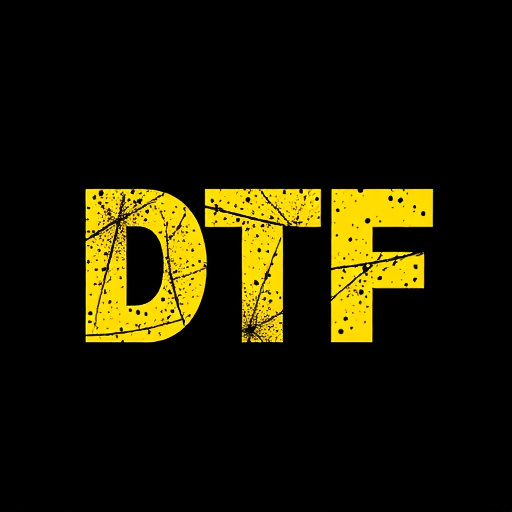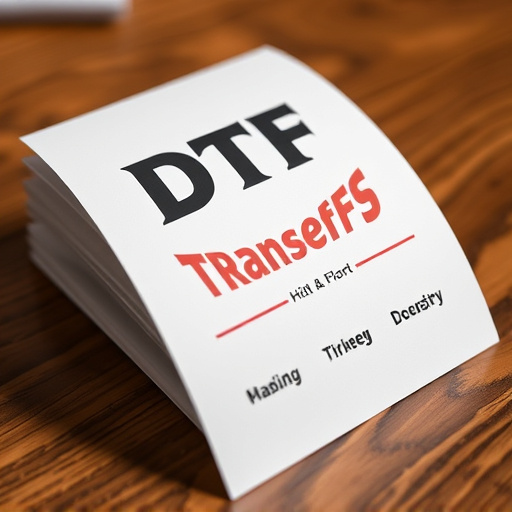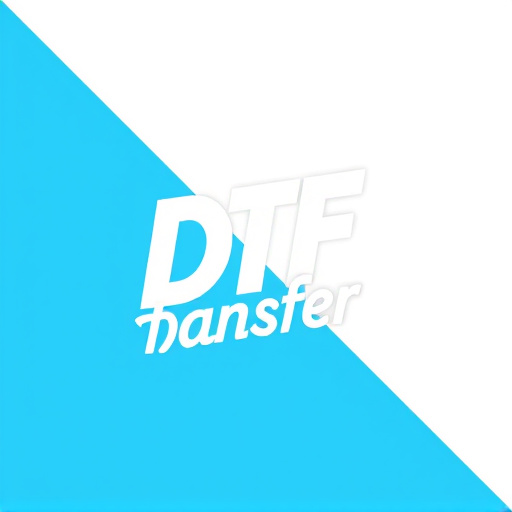“Discover the revolution in print technology with locally manufactured direct-to-film (DTF) transfers, a growing trend that bypasses imports. This article explores the benefits of adopting a local manufacturing approach for DTF prints, from enhanced environmental sustainability to cost and time savings. We delve into quality control strategies, marketing tips, and how this method fosters local economies. Embrace the future of DTF printing with these insights on why locally produced transfers are making waves.”
- Understanding Direct-to-Film (DTF) Prints: A Local Manufacturing Approach
- Benefits of Locally Produced DTF Transfers for Businesses
- The Impact on Environmental Sustainability
- Cost-Effectiveness and Time Savings in Local DTF Production
- Ensuring Quality and Consistency in Local DTF Manufacturing
- Strategies to Promote and Market Local DTF Prints
Understanding Direct-to-Film (DTF) Prints: A Local Manufacturing Approach

Direct-to-Film (DTF) prints represent a cutting-edge approach in local manufacturing, offering a sustainable and cost-effective alternative to traditional import-reliant practices. This innovative method involves transferring images directly onto film stock, eliminating the need for intermediate steps and reducing waste. By adopting DTF technology, local manufacturers can produce high-quality, customized prints on-demand, catering to various industries such as photography, art, and even merchandising.
The appeal of DTF Prints lies in their versatility and efficiency. They enable businesses to create unique, bespoke designs with intricate details and vibrant colors. Moreover, the direct printing process minimizes environmental impact by reducing water usage and chemical emissions often associated with traditional imaging techniques. This local manufacturing approach not only supports sustainable practices but also fosters economic growth by promoting domestic production and reducing reliance on imported goods.
Benefits of Locally Produced DTF Transfers for Businesses

Locally produced direct-to-film (DTF) transfers offer significant advantages for businesses in various industries. By manufacturing DTF prints locally, companies can reduce their reliance on imports, leading to cost savings and faster production times. This is particularly beneficial for small and medium-sized enterprises (SMEs) that often have limited capital and tight deadlines.
Additionally, local production ensures better quality control, allowing businesses to maintain consistent standards across their products. It also fosters a sense of community and supports the local economy by keeping manufacturing jobs within the region. This reduces transportation costs and carbon footprint, making it an environmentally friendly option. With locally produced DTF transfers, businesses can offer unique, customizable designs while maintaining efficient and sustainable practices.
The Impact on Environmental Sustainability

Cost-Effectiveness and Time Savings in Local DTF Production

Local manufacturing of direct-to-film (DTF) transfers offers significant advantages in terms of cost-effectiveness and time savings compared to importing. By producing DTF prints locally, businesses can eliminate the high shipping costs and customs duties associated with international trade, resulting in substantial financial benefits. This is particularly beneficial for small and medium-sized enterprises (SMEs) operating within limited budgets.
Additionally, local production significantly reduces the lead time for receiving orders. With no need for lengthy transportation, companies can fulfill customer requests much faster, ensuring prompt delivery and enhancing overall customer satisfaction. This agility in production allows businesses to stay responsive to market demands and quickly adapt their strategies, giving them a competitive edge over import-reliant competitors.
Ensuring Quality and Consistency in Local DTF Manufacturing

Ensuring quality and consistency in local DTF manufacturing is paramount for maintaining high standards in the industry. Local manufacturers have the advantage of direct control over production processes, allowing them to implement rigorous quality checks at every stage. This includes meticulous attention to detail during preparation, printing, and finishing stages, guaranteeing that each DTF print meets the required specifications.
Consistency is achieved through standardized protocols and regular calibration of equipment. Local producers can maintain uniform output by adhering to these procedures, ensuring that every batch of DTF prints is of the same exceptional quality. This focus on consistency is crucial for building a reliable reputation and fostering strong relationships with clients who demand top-tier DTF prints for their projects.
Strategies to Promote and Market Local DTF Prints

Promoting local direct-to-film (DTF) prints can be a powerful way to foster a unique, indigenous art scene and support small businesses. One effective strategy is to leverage social media platforms, such as Instagram and Facebook, to showcase the vibrant colors and intricate designs of DTF Prints. Sharing high-quality images, behind-the-scenes content, and customer testimonials can attract attention and build trust. Collaborating with local influencers or artists can also amplify reach and credibility.
Another successful approach is to partner with community events, pop-up markets, and art fairs where potential customers can interact directly with the products. Offering exclusive discounts, limited-edition runs, or custom designs tailored to local themes can create a sense of urgency and exclusivity. Engaging with local businesses, such as cafes or boutiques, for cross-promotion can further extend the audience reach while fostering a collaborative environment that supports both artists and retailers.














